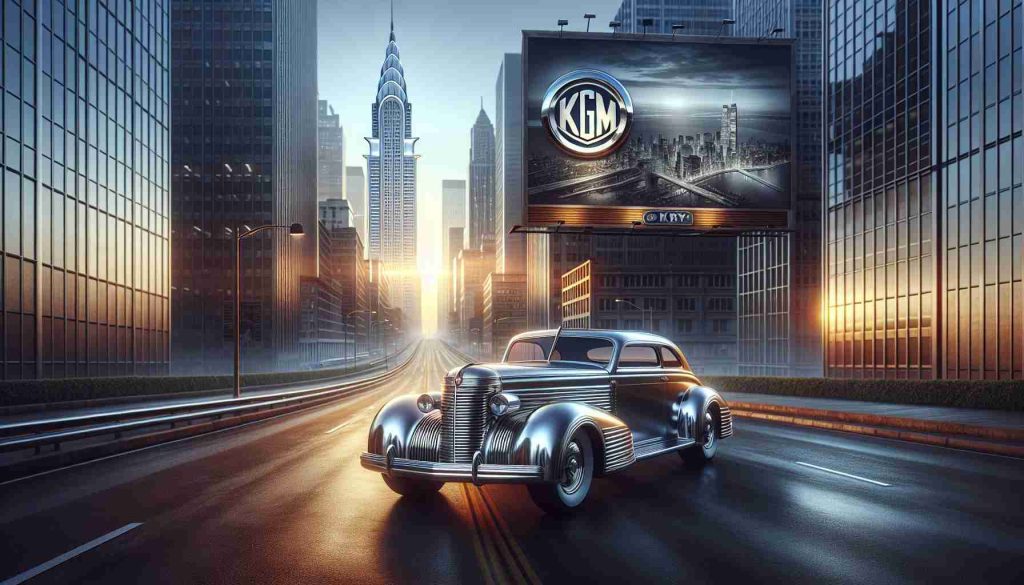KGM Ignites a New Era
The automotive industry witnessed a seismic shift as of July 1st when SsangYong rebranded itself as KGM, symbolizing the dawn of a fresh chapter. The metamorphosis reflects a broader transformation within the South Korean brand.
The Birth of KGM
The evolution transpired following the acquisition of a controlling stake in SsangYong by the KG Group last summer. This strategic maneuver marked a pivotal moment in the annals of the automotive giant. Such transitions are not uncommon in the industry, with notable predecessors like Jaguar Land Rover rechristening themselves JLR in mid-2023.
Legacy and Transformation
Despite its 30-year reign as SsangYong in Spain, the transition to KGM represents a bold step forward. The nomenclature shift necessitates recalibrating consumer perceptions, given the deep-rooted associations customers hold with iconic models like Tivoli, Korando, Musso, Torres, and Rexton. However, with unwavering commitment, Carlos Olaso, the General Director of KGM in Spain, affirms the brand’s steadfast dedication to delivering top-tier products at competitive prices through its dealership network.
The Essence of KG Mobility
KGM finds itself ensconced under the KG Mobility arm of the KG Group, a multifaceted conglomerate spanning industries from steel and chemicals to finance and media. The synergy between KG Group and Mobility underscores KGM’s ethos of “Korea Genuinely Made,” encapsulating its dedication to authentic Korean craftsmanship.
Innovation and Sustainability
The company’s revival strategy extends beyond financial infusion to product diversification exemplified by the launch of the Torres model. This dual-pronged approach, marrying fiscal fortification with commercial expansion, has been pivotal in revitalizing the company’s prospects for sustained growth and long-term viability.
Charting a Glorious Legacy
With the rebranding as KGM, the venerable automaker celebrates its 70th anniversary as South Korea’s oldest vehicle manufacturer, having sold over 1.7 million vehicles globally in the past 15 years. Specializing in SUVs since its inception in 1954, KGM’s storied history includes iconic models such as Musso, Korando, and Rexton, culminating in a product portfolio that resonates with consumers across 126 countries worldwide.
Accelerating into the Future
As KGM continues its expansion into new markets in Central America, Eastern Europe, India, and China, the company remains buoyed by its robust performance. With an eye on the future, KGM aims to boost its 2026 sales to an ambitious 320,000 units, a 166% increase over its previous milestone.
Performance in Spain 2024
KGM Spain recently capped the first half of 2024 with a remarkable 147% sales growth, selling 3,433 units. Alberto Herrero, the Commercial Director, attributes this success to the relentless efforts of the commercial team and dealership network. The fervor surrounding KGM’s resurgence is palpable, as the brand’s network of 56 dealerships, 71 sales outlets, and 84 service centers in Spain proudly sport the new KGM insignia.
The Legacy Continues: Unveiling KGM Automobiles’ Untold Story
In the realm of automotive history, KGM Automobiles has a rich tapestry of accomplishments that have yet to be fully unveiled. Founded in 1954 as South Korea’s pioneering vehicle manufacturer, KGM has a legacy that predates its renowned rebranding. The roots of its success can be traced back to its early days as a small but ambitious player in the global automotive landscape.
Unearthed Chronicles: The Origins of KGM Automobiles
Before becoming the powerhouse it is today, KGM underwent a series of transformations that shaped its identity. One lesser-known fact is that KGM’s founder, Kang Geun-mo, started the company with a vision to revolutionize the automotive industry by combining innovative design with cutting-edge technology. This commitment to excellence laid the foundation for KGM’s ascent to prominence.
Key Questions Unveiled: Exploring the Depths of KGM
– What sets KGM Automobiles apart from its competitors in terms of design and technology?
KGM Automobiles has consistently stood out in the industry due to its unwavering dedication to innovative design and technological advancements. From pioneering safety features to futuristic aesthetic elements, KGM continually pushes the boundaries of automotive ingenuity.
– What challenges has KGM faced in maintaining its position as a leading global automobile manufacturer?
Despite its illustrious history, KGM has encountered challenges in navigating the volatile automotive market. Issues such as evolving consumer preferences, regulatory changes, and global economic shifts have tested KGM’s resilience and adaptability.
– How does KGM address sustainability concerns in its manufacturing processes and product lineup?
Recognizing the importance of sustainability, KGM has implemented eco-friendly practices in its manufacturing processes and incorporated fuel-efficient technologies in its vehicles. By prioritizing environmental consciousness, KGM strives to minimize its ecological footprint while delivering high-quality automobiles.
Advantages and Disadvantages of KGM’s Evolution
Advantages:
– Enhanced global recognition: By rebranding and expanding into new markets, KGM has garnered increased visibility and brand loyalty.
– Technological innovation: KGM’s commitment to research and development has fueled technological advancements in its vehicles, setting new industry standards.
Disadvantages:
– Consumer perception challenges: Transitioning from a well-established brand like SsangYong to KGM may pose initial difficulties in retaining loyal customers and attracting new ones.
– Competitive pressures: In a rapidly evolving market, KGM faces intense competition from both traditional automakers and emerging players, necessitating continuous innovation to stay ahead.
For further insights into the evolution and legacy of KGM Automobiles, visit kgmautomobiles.com.










More Stories
Game-Changer in Delivery! Glovo’s Bold Move Stuns Spain!
Maximizing Returns Beyond Treasury Bonds
Exploring the Rising Trends in European Banking